Prioritizing health and wellness is a cornerstone of our lives, with a fitness goal of staying active well into our 80s and 90s. We draw immense inspiration from the blue zones—regions of the world where residents often live past 100 years, thanks to their healthy lifestyles. If you’re not familiar with blue zones, they are areas known for their exceptionally long-lived populations, including Okinawa, Japan; Sardinia, Italy; Nicoya, Costa Rica; Ikaria, Greece; and Loma Linda, California. There was also recently a great Netflix series on this topic “Live to 100: Secrets of the Blue Zone.” During our visit to Okinawa, Japan, we couldn’t miss exploring the blue zone area of Ogimi Village. In this half-day itinerary guide, you’ll discover what to do, where to eat, where to stay, how to get there, and other tips for experiencing this remarkable blue zone.
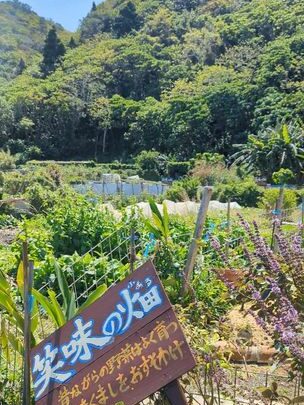
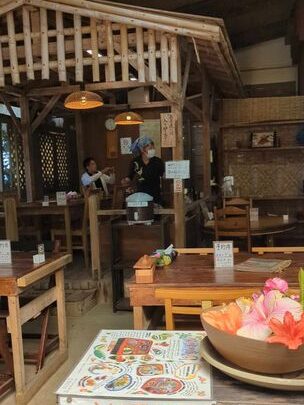
Ogimi Village is not a tourist destination which means that it is an authentic village with little commercial activity. As a visitor, it also means that there aren’t really sights or activities for you to participate in. There are some local tour guides that could give you more information and access to the village. These tours are mostly private so they would be worthwhile if you had a larger group because they are pricey at $250+ USD. We decided to explore the village on our own. While we probably didn’t get the most in-depth experience, we experienced firsthand what makes this village special and enjoyed a delicious longevity meal.
What makes Ogimi Village, Okinawa a blue zone?
Okinawa as a whole looks like most other modern societies with fast food, highways and convenient stores. There’s also a large American military base that heavily influences the island. Fortunately, you can still find pockets of the traditional lifestyle in the more remote northern parts of Okinawa such as Ogimi Village. Here are some of the main pillars of health that contribute to the long lifespan of the residents of Ogimi Village, Okinawa.
1. Diet
Their diet is almost entirely made up of fresh vegetables from the garden with the occasional piece of meat or fish. Common vegetables in a meal would include the local purple sweet potato, seaweed, and a variety of different greens. Traditionally, the elders only ate what they grew or what their neighbors grew. They didn’t shop at grocery stores or eat out at restaurants so they knew exactly where all of their food came from. They also practice eating until they are 80% full so that they don’t overeat. This concept is so important that it’s often said aloud before each meal.
2. Community
Community is often overlooked when it comes to living a healthy lifestyle but Ogimi Village and the other blue zones have shown that it is core to longevity. The people of Ogimi Village are a tight community and they have regular get togethers in their community center. They also spend a lot of time socializing and helping each other out. Although many of the elderly live alone, there is always someone part of the community that will visit and help out.
3. Exercise
The people of Ogimi Village don’t go running or go to the gym, they get their exercise from gardening and doing house chores. By growing all of their food, they spend a lot of time tending to their fruits and vegetables which require a good amount of strength and fitness. Walking is also their main mode of transportation rather than driving a car.
4. Environment
Ogimi village is surrounded by the forest and ocean and gets plenty of sunshine. Their environment is supportive of getting outside, socializing, being in nature and getting sun. It also supports the nutritious fruits and vegetables that they are able to grow all year round. The sea also provides nutritious seaweed and the occasional fish.

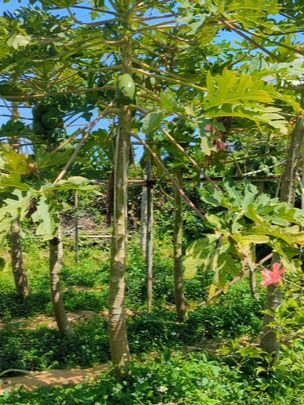
5. Ikigai
Ikigai is a combination of purpose with assisting others. It’s a concept that gives people confidence in their contribution in life and helps with stress management. A sense of purpose is known to add years to your life so it’s not a factor to overlook. The fact that there’s a dedicated word and common understanding of ‘ikigai’ illustrates the importance that purpose holds for this community.
Things to Do in Ogimi Village, Okinawa: Blue Zone of Japan
The best way to get insight into the lifestyle of the blue zone of Okinawa is to spend the day exploring the environment, walking around the village and enjoying a nice healthy meal. You’ll get the special opportunity to experience the pillars of health of this blue zone firsthand. Be thoughtful and respectful to not disturb the villagers who live there.
Seven Falls of Kijoka
A sacred place with a charming torii at the entrance to the falls. As it is a sacred place, there are signs to not swim and go in the water. The falls are not overly impressive but the area is very peaceful. The water from the mountains is supposedly very rich in minerals. We read that the water from the region is bottled and sold but we didn’t end up finding it.
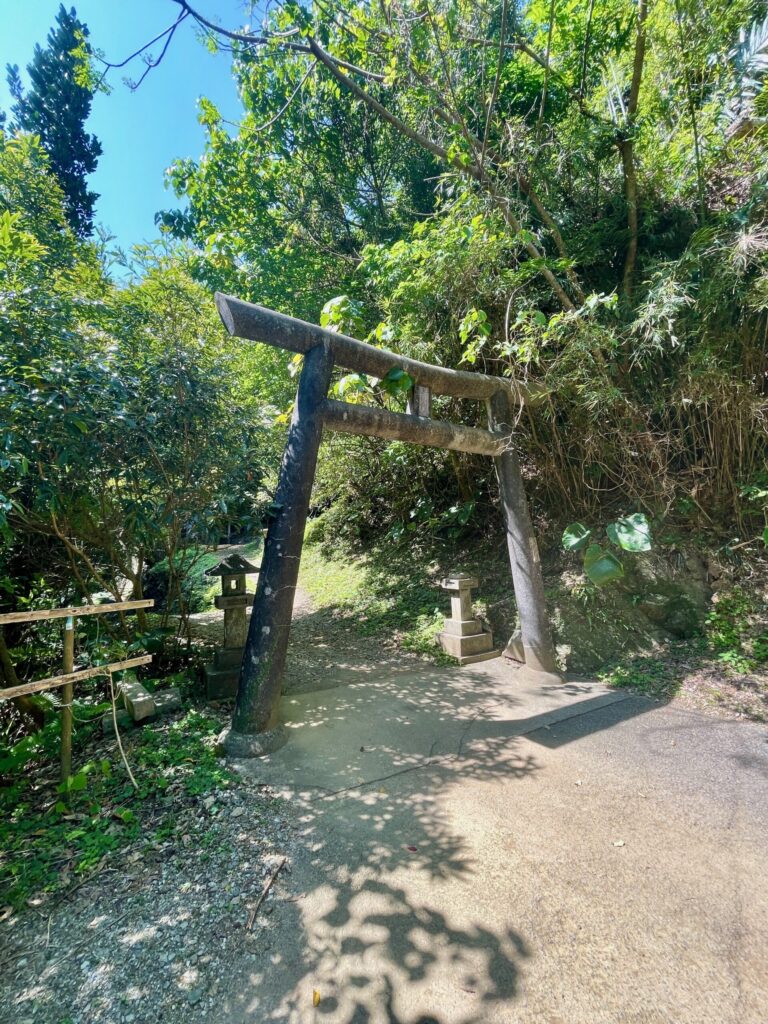
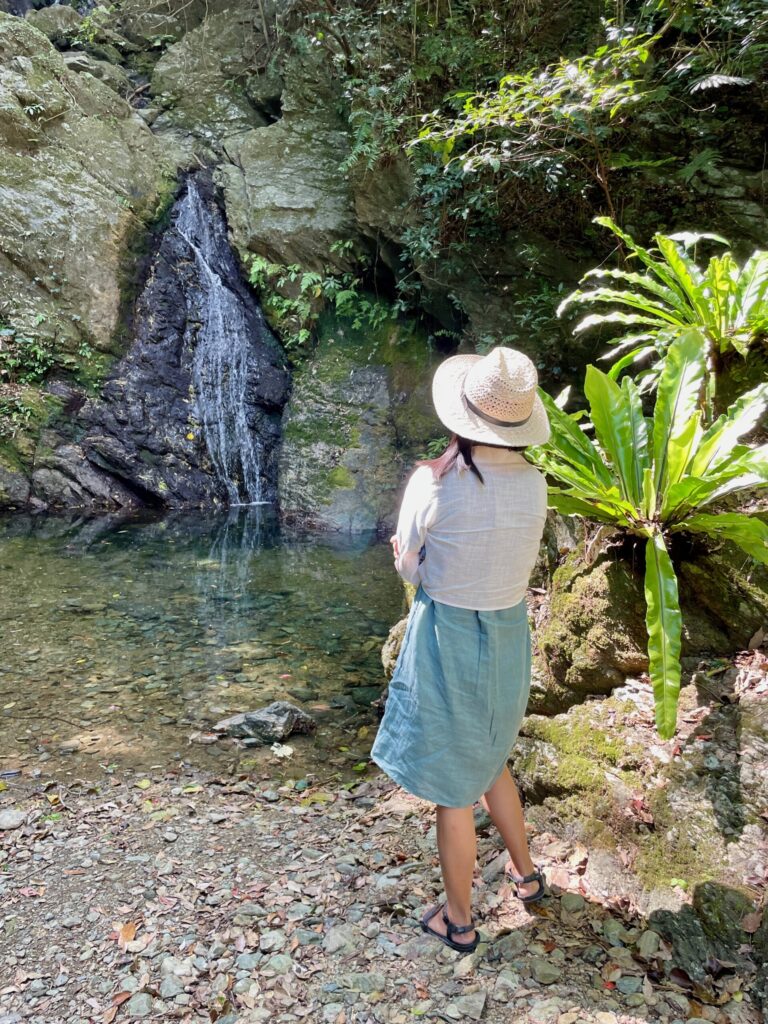
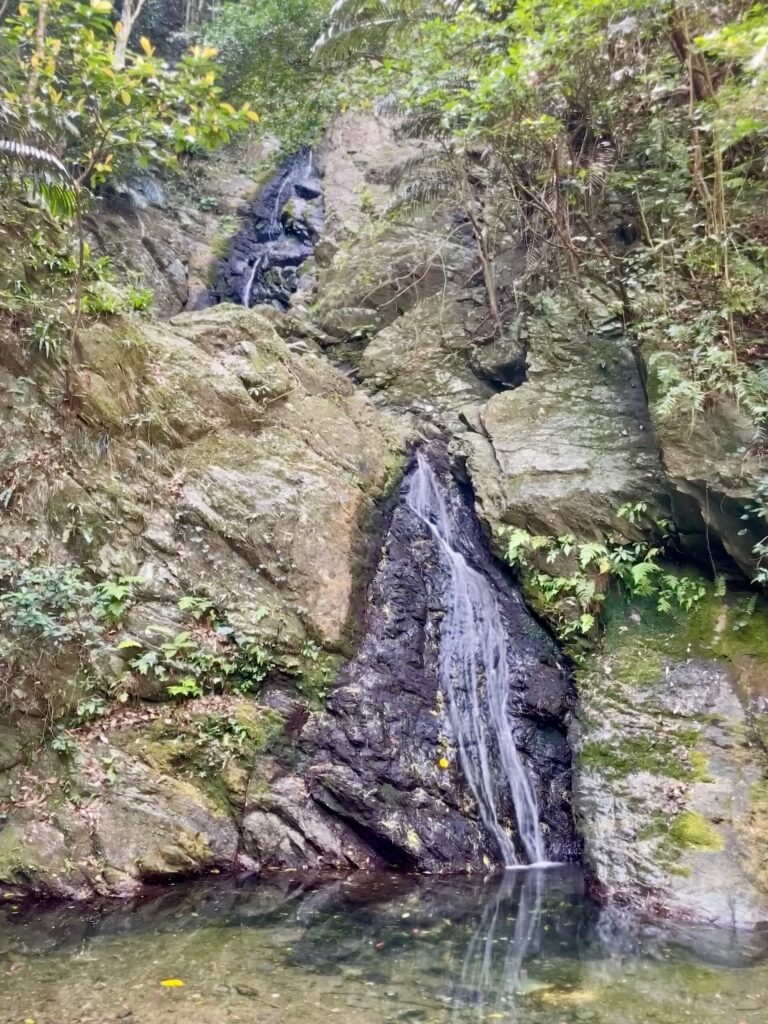
Purple Iris Fields
If you happen to be there in April, the Iris flowers are in bloom and the fields are a lovely place to walk around and take pictures. The farmers also have them for sale to take home.
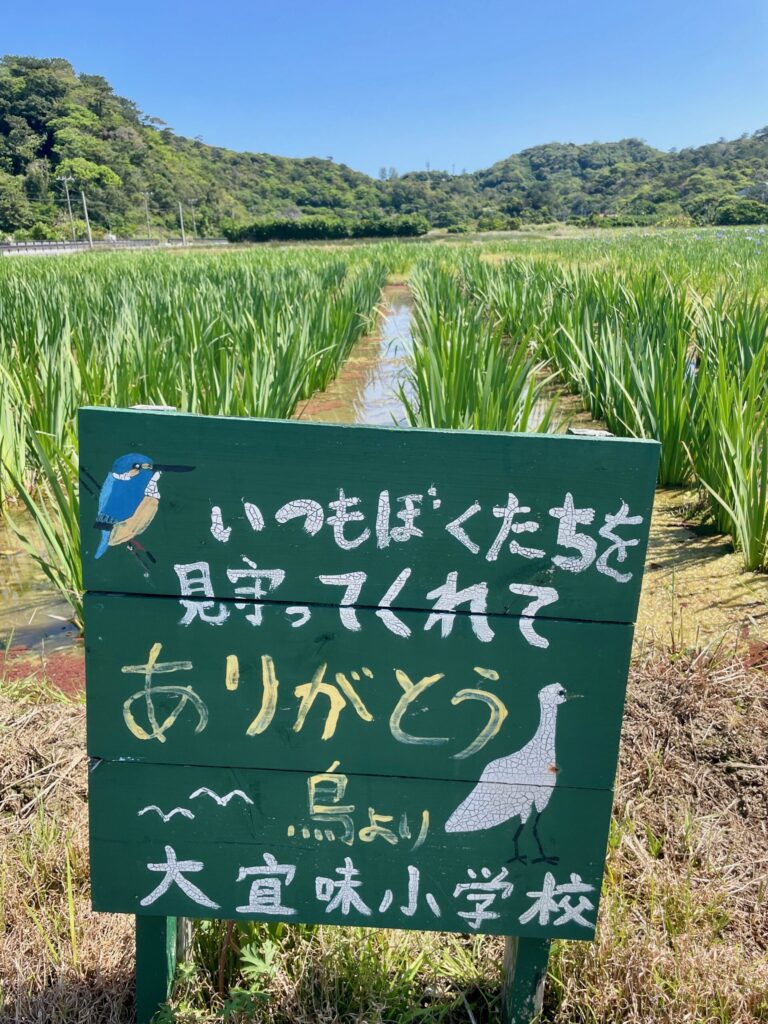
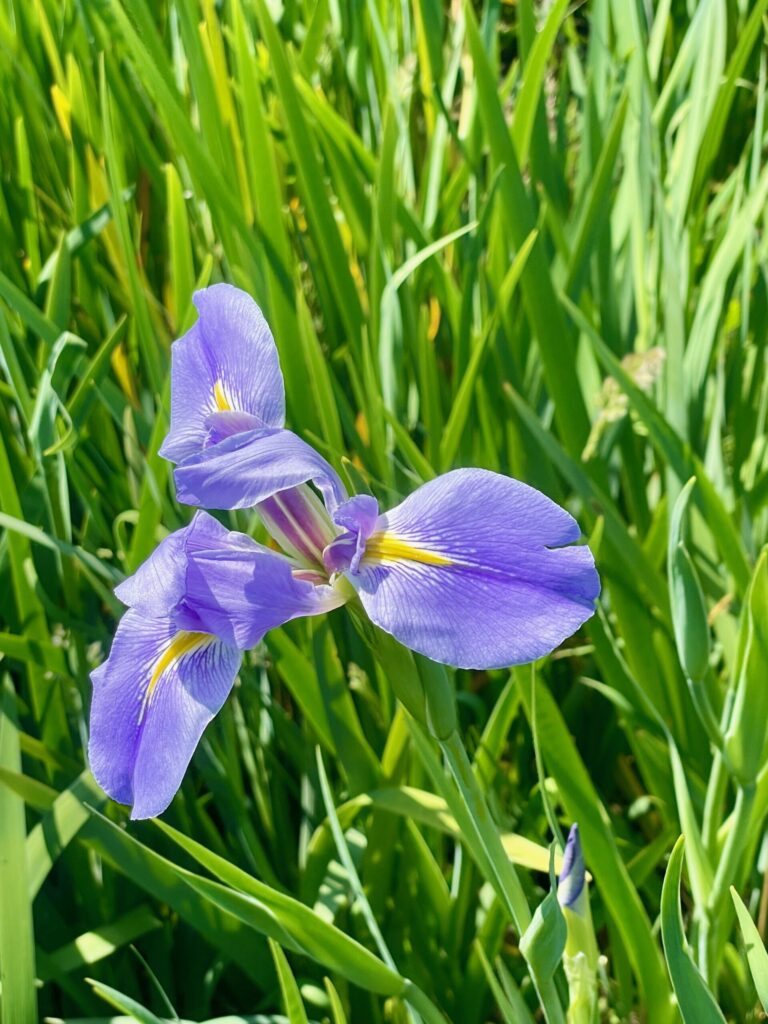
Visit the Coast and Beach
The coast along Ogimi Village is a beautiful place to witness the famous Okinawa blue waters. We didn’t see anybody swimming or snorkeling but the water looked very inviting. Better to ask someone if it’s safe before getting in the water.
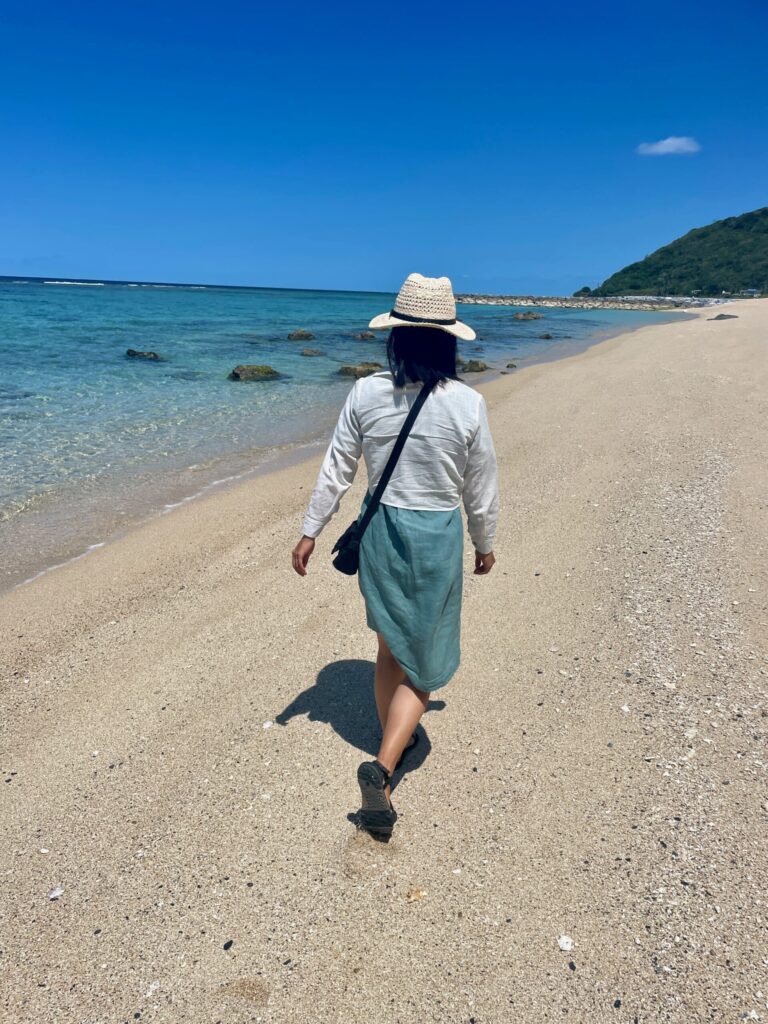
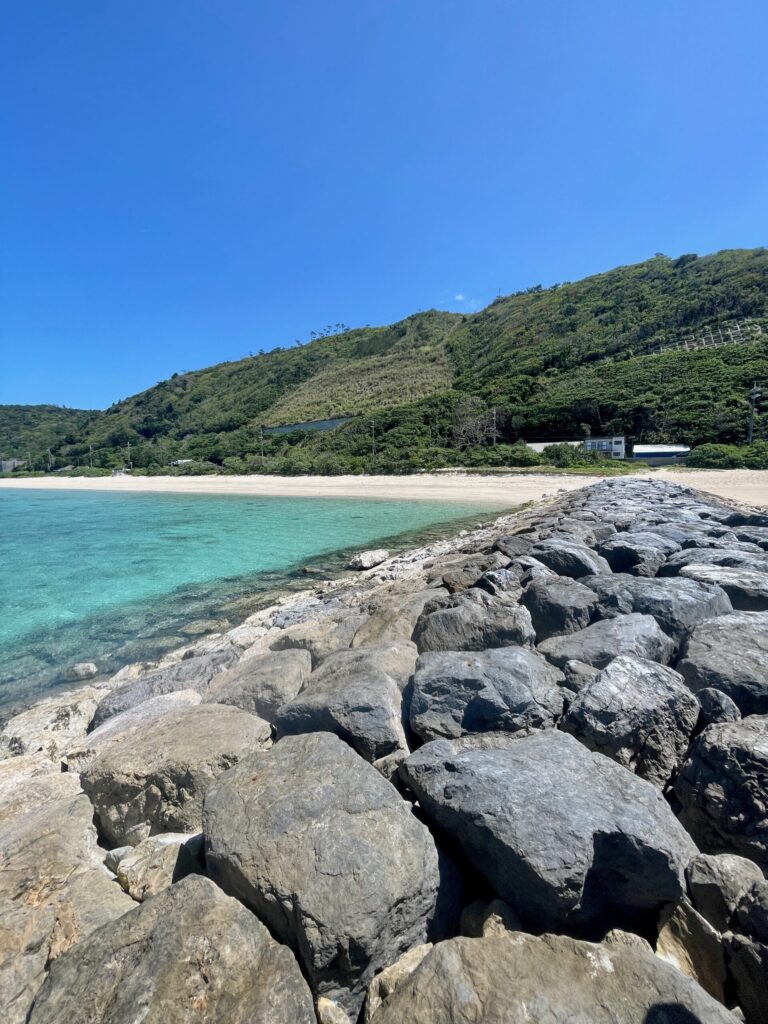
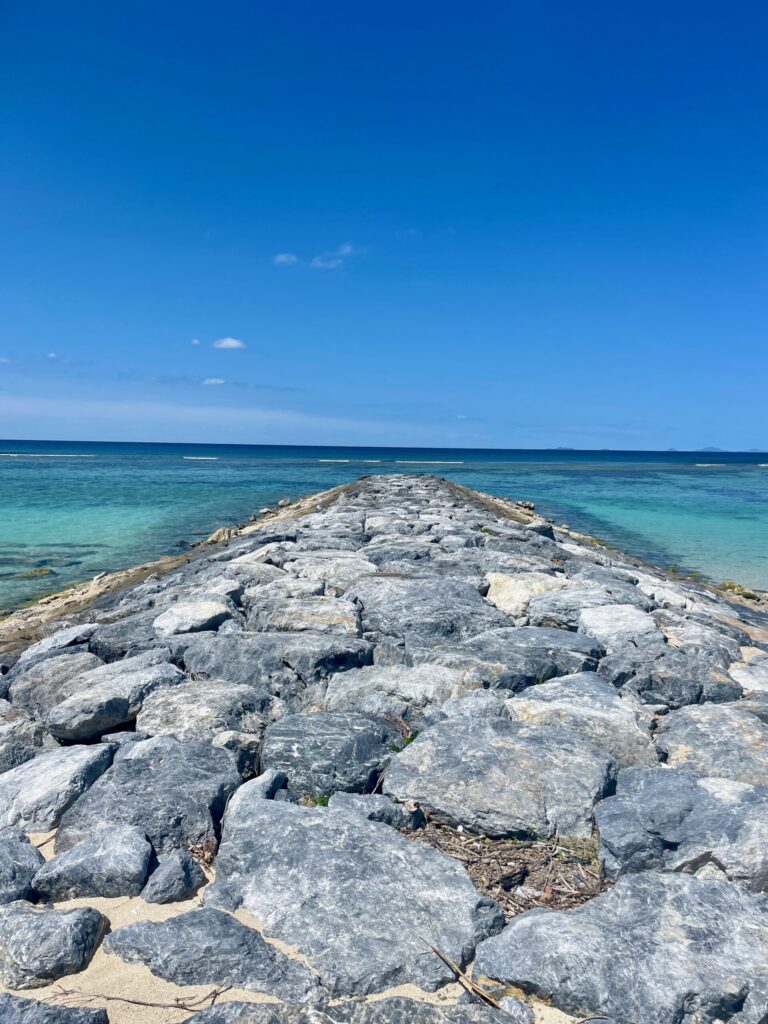
Walk through the village
A leisurely stroll through the village will give you a sense of the peace, simplicity and community that all of the residents live with. You will see healthy elderly residents being very independent – gardening outside, chatting with neighbors and walking on the street. Almost every home will have a thriving garden in the yard from all the rain and sunshine the area gets. You’ll witness firsthand what type of environment is supportive of living a long and healthy life.
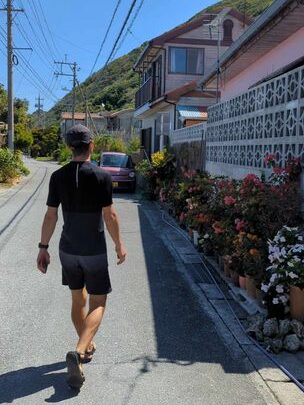
Where to Eat for a Blue Zone Diet
Emi No Mise
If you only do one thing on your blue zone visit to Ogimi Village, it should be to have lunch at Emi No Mise. It is a beautiful restaurant and the perfect introduction to the fresh ingredients and healthy cooking that is in the traditional Okinawa cuisine. They grow all of the vegetables themselves and everything is cooked with so much care. You MUST make a reservation to avoid disappointment because there is limited seating and they prepare the food fresh. While we were having lunch, we saw several people without a reservation get turned away which is a real shame.
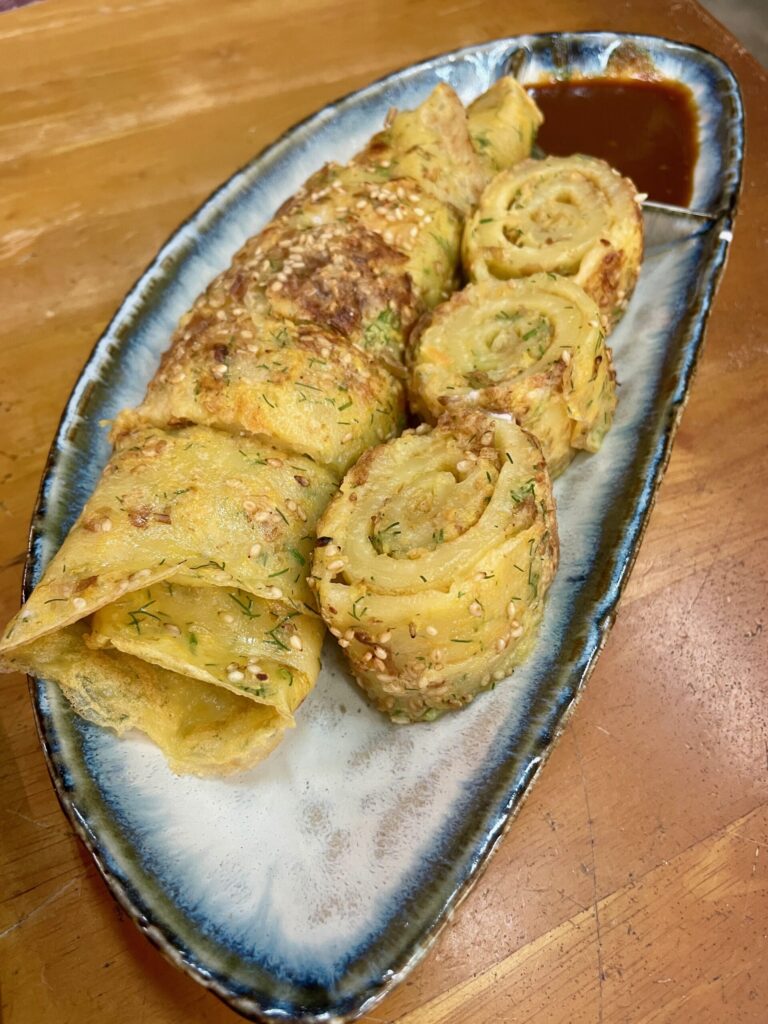
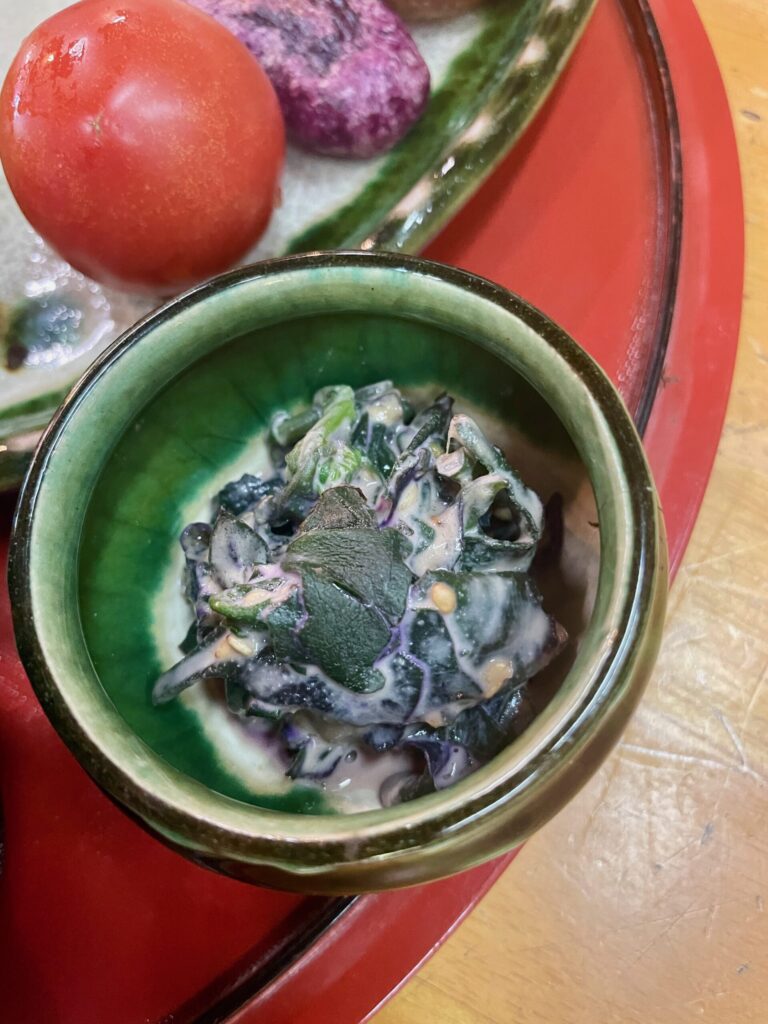
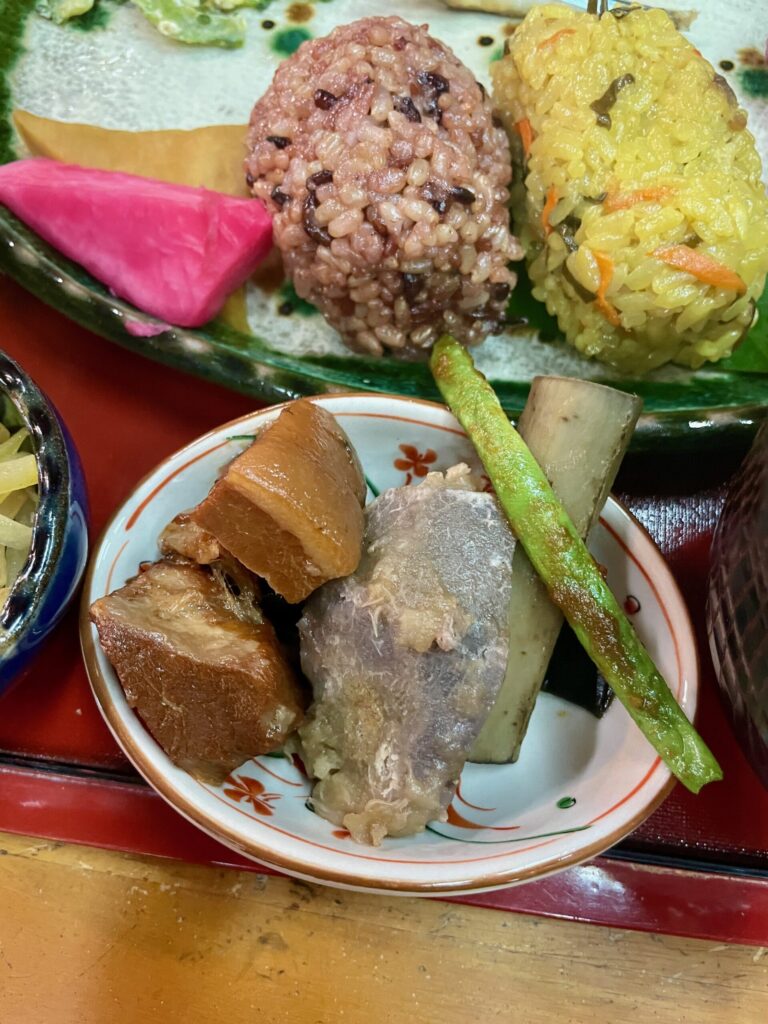
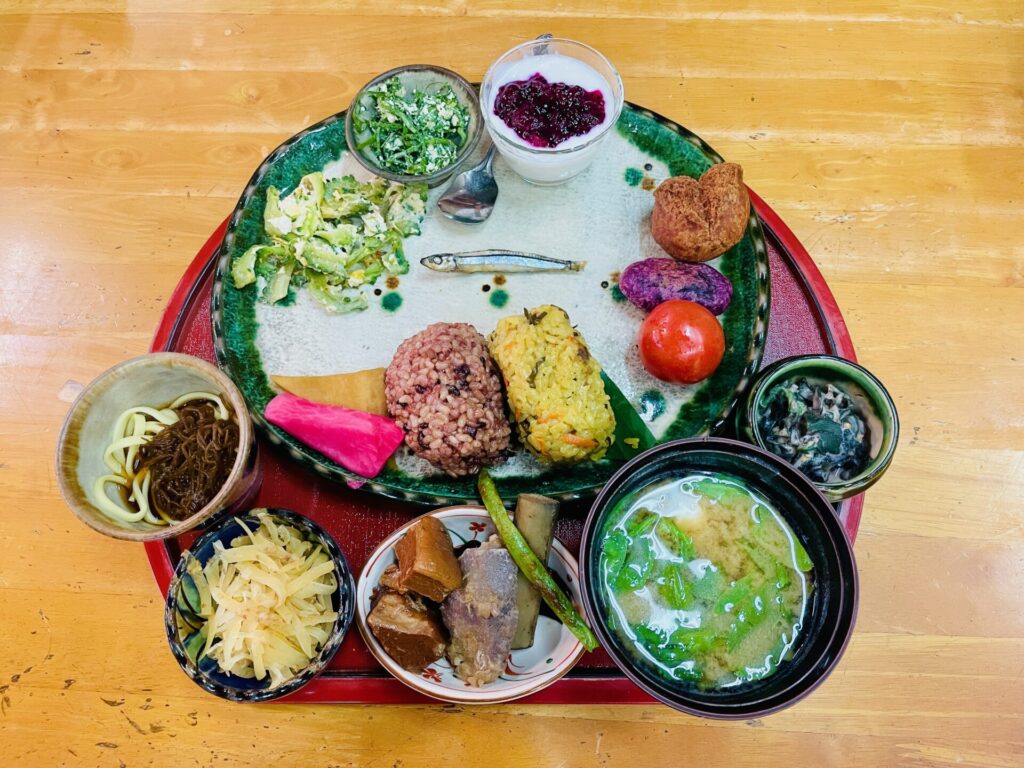
The special lunch was a beautiful, colorful plate of lots of different dishes to sample. The restaurant even provides a menu in English with photos to explain what all of the special ingredients are and their health benefits. Although the lunch was not vegetarian, we noticed that the plate was 90% vegetables which is a good representation of the traditional diet. Everyone would definitely be much healthier if they ate this lunch everyday!
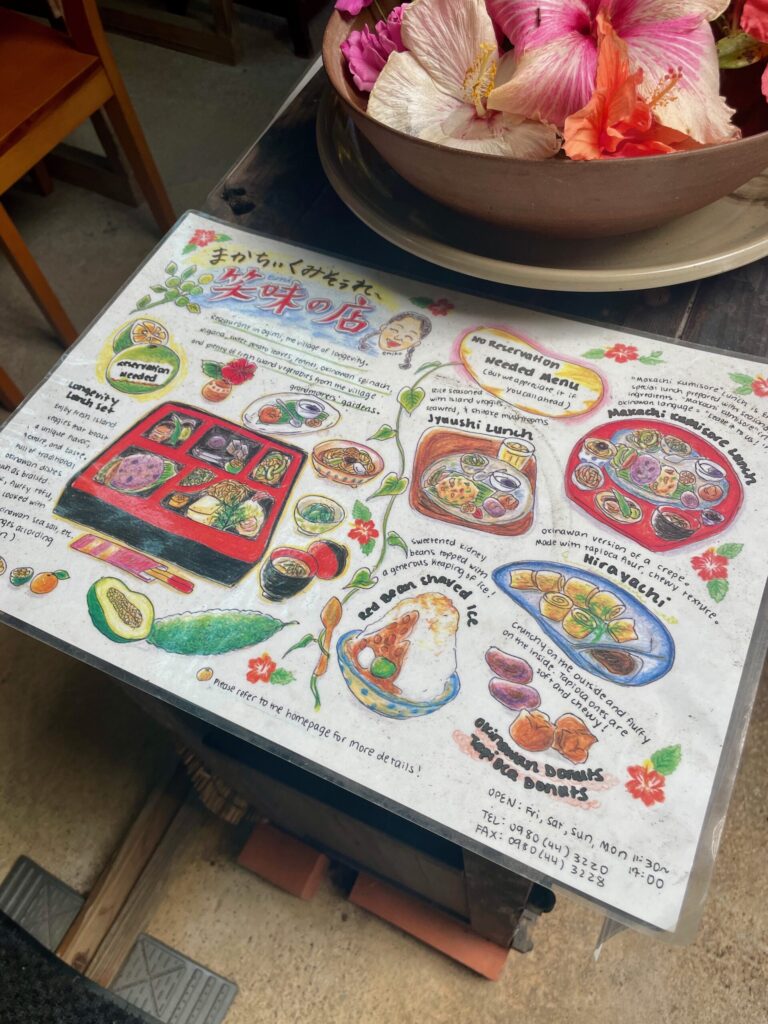
Roadside Station
A small shop that sells local food products. Here is where we discovered the local super fruit, shikuwasa. It’s a tiny citrus fruit that looks like a small lime. One tiny shikuwasa apparently has the same nutrients as 40 oranges! Many believe that it’s a contributor to the good health of Okinawans. You can buy the juice concentrate in a bottle and add water to have a very refreshing drink.
Where to Stay Near Ogimi Village
There are some homestays offered if you join a tour. If you’re exploring on your own, there aren’t a lot of accommodation options nearby.
Okuma Private Beach and Resort is one option about a 5-10 minute drive away.
Unless you plan on spending most of your time in the north, it can be more convenient to stay in Naha. This is because Naha is where you’ll find the airport, the ferry port, most car rental companies and many restaurant options.
We stayed at the Chura Gahna House Tsubogawa Naha which we recommend because it was a very well-equipped studio with a kitchen and balcony. It’s great for longer-term nomads like us or if you prefer apartment living. Chura Gahna House is close to the monorail station, grocery stores and restaurants. It’s about a 15 minute walk to the center of town which we didn’t mind.
Getting to Ogimi Village, Okinawa
The best way to get to Ogimi Village is by renting a car. It is about a 1 hour and 45 minute drive on the highway from Naha, the main city in Okinawa. There isn’t a good way to get there via public transportation.
Final Thoughts
We are truly inspired by experiencing the Japanese blue zone of Ogimi Village Okinawa firsthand. It’s one thing to read about health and the important contributors and it’s another thing to see it in action. The people of Ogimi Village are living very rich, long lives thanks to their environment, culture, diet, habits and community. We will definitely try to adopt many of their secrets to longevity – if only we can find a way to eat lunch at Emi No Mise everyday!
Planning a trip to Japan? You might be interested in a 3 Day Itinerary of the Kerama Islands Okinawa, Driving in Japan: What You Need to Know, and A Ski Trip Guide to Nozawa Onsen Japan.
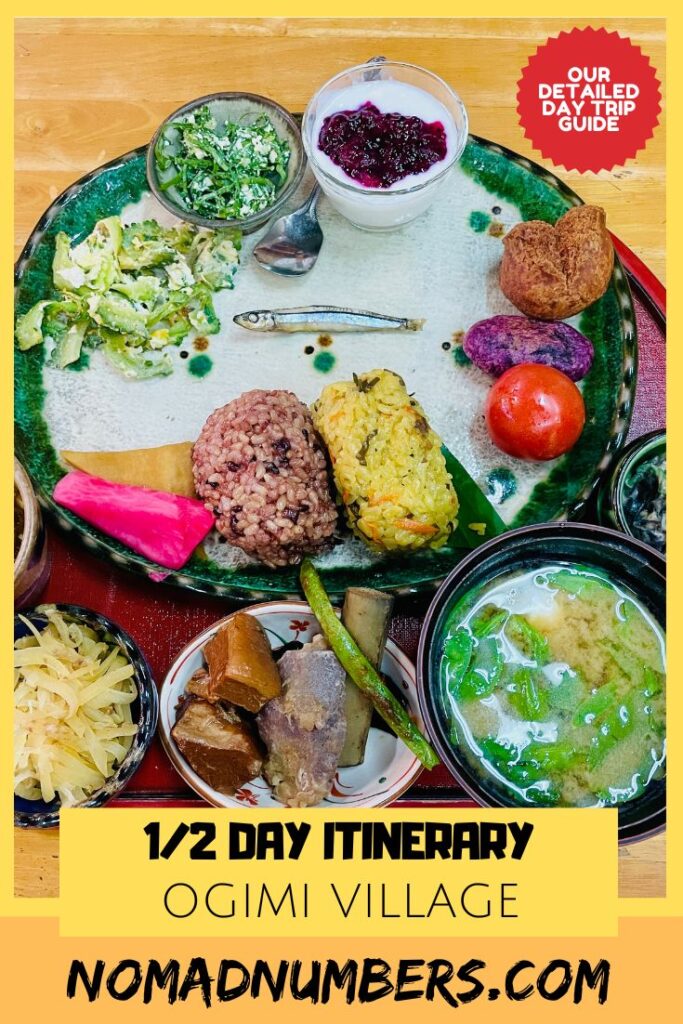



2 Comments
Joyce · November 29, 2024 at 8:06 pm
How do we make reservations to visit the Village and Lunch?
Mr. Nomad Numbers · November 30, 2024 at 7:24 am
Ho Joyce. You need to call them to make a reservation. Let us know if you can’t find their phone number (it should be available from their listing on Google Maps).